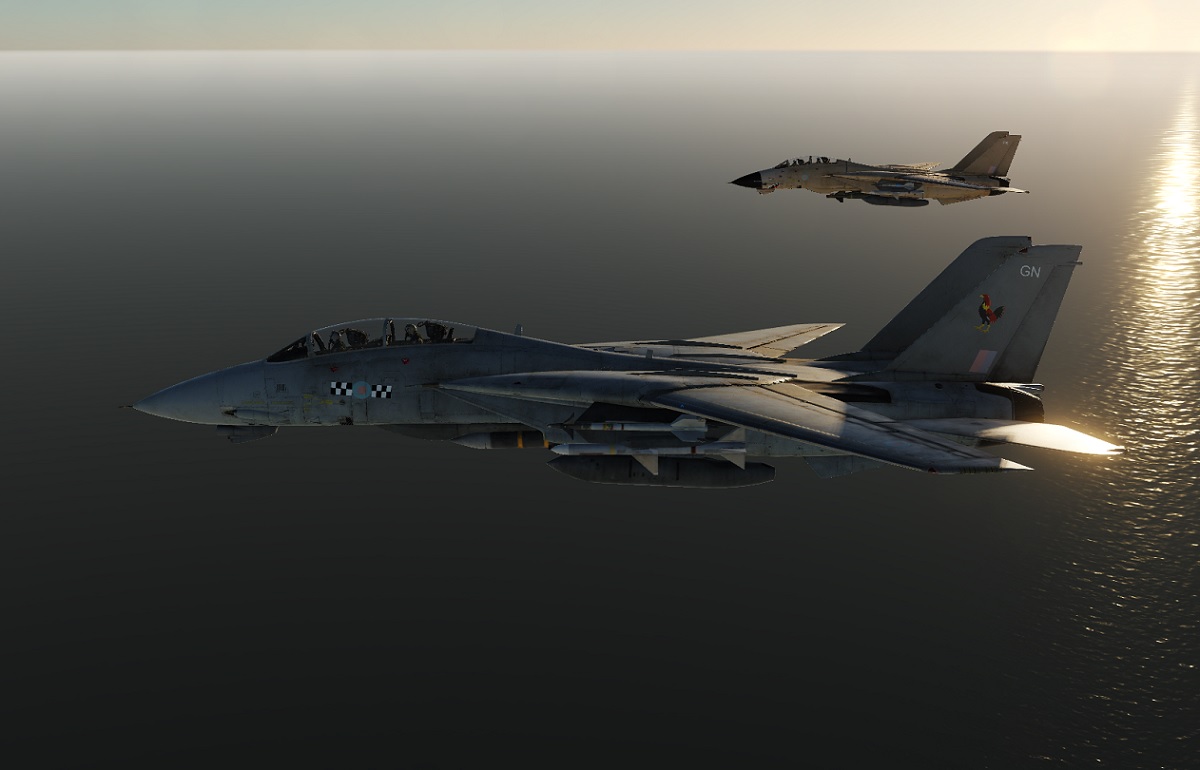The possibility of acquiring an RAF F-14 Tomcat was considered. Purchasing used models from the US Navy or possibly Iran could have been one way to reduce the bill
The development of Soviet long-range patrol and bomber aircraft during the Cold War required a fleet defense fighter capable of engaging high-altitude bombers that were well beyond visual range. Grumman’s response was the F-14 Tomcat. With the long-range AIM-54 Phoenix air-to-air missiles mounted on them, F-14s were able to engage enemy targets more than 90 miles away. Grumman created the F-14’s extremely efficient variable-sweep wing, which allowed it to fly at a variety of airspeeds, in response to the need for an interceptor to be able to go at a high speed while carrying this heavy ordnance.
Several countries had evaluated the F-14 Tomcat by the late 1970s, but none of these evaluations led to a sale. Considering the aircraft as a substitute for the F-15 Eagle, Israel, Saudi Arabia, and Japan all chose the McDonnell Douglas fighter with a single seat.

The F-14 was in widespread use by the US Navy and was also in limited service in Iran, so the Grumman fighter’s story was probably going to be dull as it lacked the F-4 Phantom’s remarkable sales and variants.
According to Doug Richardson’s narrative in his book Grumman F-14 Tomcat, the British Royal Air Force (RAF) was once considered a possible customer. The British MoD considered the F-14, F-15, and F-16 in response to the growing expenses of the proposed Tornado Air Defense Variant (ADV). It concluded that only the F-14 would meet Britain’s defense needs; the F-15 lacked the two-seat cockpit and facilities required for interception in the face of massive ECM, and the F-16 was simply too small. Tornado appeared to be the better option, especially considering the estimated cost of Tomcat.

An additional issue was the ADV project’s sluggish timescale. In the late 1970s, less than 100 fighters were defending the UK; one newspaper put it this way: “The Few have never been fewer.” The British Press seemed surprised by the minuscule size of the UK’s run-down defenses. Maybe they believed that the lengthy series of defense “reviews,” which is a polite way of saying “cuts,” that governments had imposed on the British armed services were merely theoretical exercises.
The possibility of purchasing an RAF Tomcat was discussed once more. Purchasing used ones from the US Navy or possibly Iran would have been one way to reduce the cost. Inquiries were made, but the MoD was keen to dismiss these as unauthorized, and the work of low-level officers once appeared on the pages of the daily newspapers. A few weeks later, Grumman asked the defense editor of Flight International, a British weekly magazine, if he thought the RAF was interested in Tomcat, while at an airshow. The company had to decide if it would be worthwhile to invest a lot of time and energy to pursue a potential sale. ‘It’s funny you should ask me that—I was about to ask you the same question!’ he replied. ‘The fact that you are asking me answers it, I think.’
The RAF’s dire situation was front-page news for a while, but finally, it faded into obscurity. The “fighter gap” would only persist for a few more years as Tornado ADV would likely enter service in 1982 or even 1983. In 1979, a Conservative politician assured Richardson that there would be no slippage from the ADV timeline. The government would consider purchasing US fighters if Panavia was unable to deliver the goods on schedule. He may have believed that the threat to ‘buy US’ could be used to keep the ADV program up to speed, but that was not the case. Maintaining timescales is not something that Europe’s ailing aircraft manufacturers are very good at.
The only US fighters ordered in the interval were a batch of ex-US Navy F-4J Phantoms, which were brought into service to make up for the stationing of Spy-engined Phantoms in the Falklands following the 1982 battle with Argentina. By June 1985, Tornado was still not in squadron service.
Photo by Digital Combat Simulator and Cpl Paul Saxby Crown Copyright

